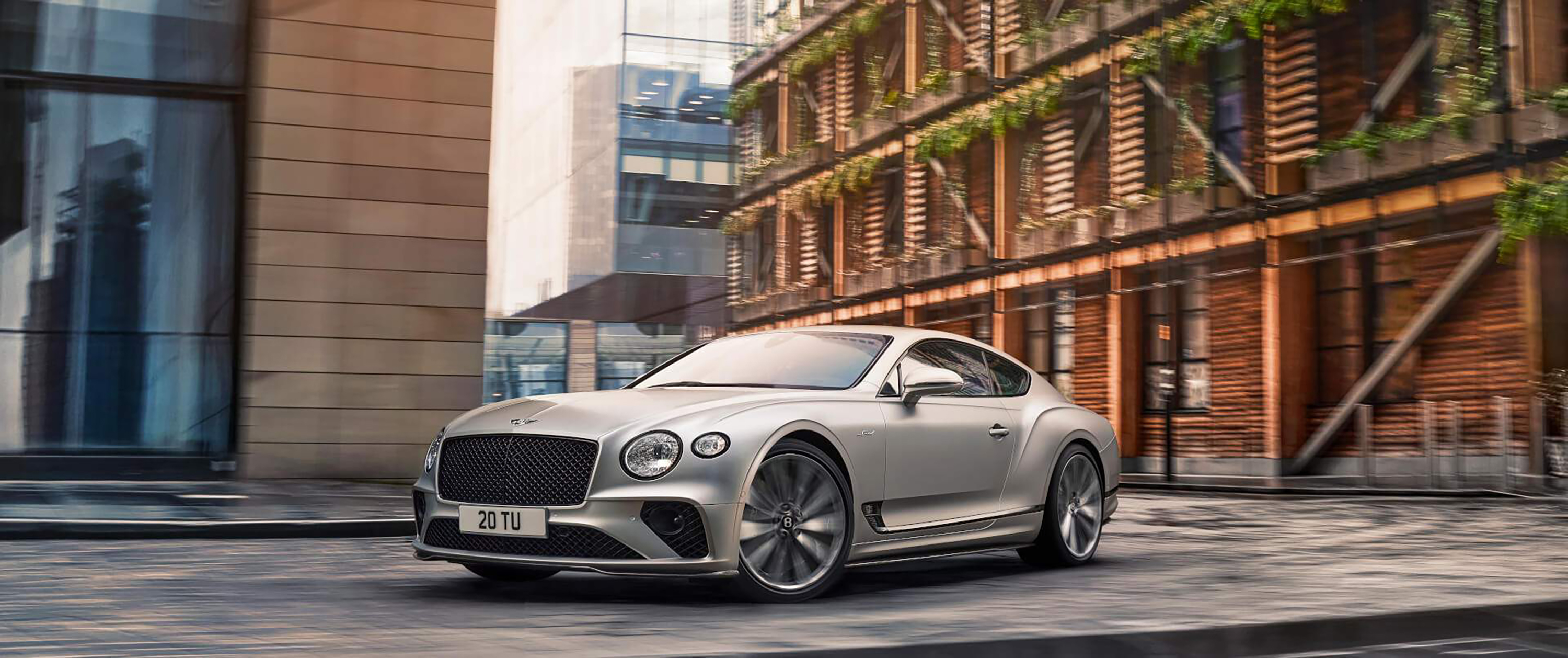VROOM WITH A VIEW
The Bentley Continental GT is unique, and for that you’re going to pay dearly

Bentley’s new beauty is streets ahead of the old one. It’s night and day. A different country.
This morning, I was waiting at a traffic light behind an old VW Polo. The badge on the back told me that it was a 2-litre, and it occurred to me that in this day and age, to have a 2-litre motor in your Polo you need to stump up almost R500,000 for the GTi version.
The new Polo GTi is one of the more fun cars I’ve tested this year that verges on the accessible. These days, more humble Polo derivatives, and all other smaller cars, tend to run around with smaller four-cylinder motors, and often little three-cylinder turbo-charged 1-litre engines.

The Bentley Continental GT. (Photo: bentleymotors.com)
Realistically, these are the last of their kind. Euro 7 emissions regulations, due for promulgation in the EU in July, will impose ever-stricter requirements on manufacturers, making it increasingly difficult to build internal combustion cars at a price that ordinary Europeans will find acceptable. Fortunately for them, the cost of electric cars – with some assistance from various government schemes – is plummeting.
Opinions vary as to when the total cost of ownership of electric vehicles (EVs) vs internal combustion engine (ICE) cars will meet, but Leaseplan, one of Europe’s biggest fleet operators, says this moment has already arrived in most European countries. EVs, they say, are now cheaper to buy and run.
The future of small-car mobility in the EU is electric, and that future is likely to arrive sooner than we realise as interim emissions rules price out the small internal combustion car. The question that the big car companies, who have signed up to the Paris Agreement that commits them to reaching net zero by 2050, will have to consider is what to do in parts of the world where there is more lax environmental legislation, such as in SA.

The rear of the Bentley Continental GT. (Photo:bentleymotors.com)
Here, they can sell pretty much what they like, so the development of the local market will depend on whether the regulatory space changes. If SA remains hostile to electric mobility via its antiquated tax regulations, and indifferent to our terrible air quality and its health consequences, then the chances are that we will see the development of a small, high-end EV market, where a few people are willing to pay far too much for an overtaxed EV, and ever-more imports of simpler, dirtier internal combustion cars built mainly for markets such as China and India.
It’s different for the wealthy. If there is a full internal combustion ban in the EU from 2035 – and that’s the plan – high-end luxury cars will be the last to shed their cylinders, their turbos and their snarly exhausts.
In this environment of vanishing cylinders and the scramble for ownership of battery supply chains, one can only ever be keenly aware that firing up a 12-cylinder motor is not only extravagant and the height of luxury, but also a vanishing moment in time.
The new Bentley Continental GT Speed, equipped with a 6-litre W12 motor (two V6s elegantly together), is one of those rare occasions in the motor industry where the step between the last car and the new one does not feel like a sensible, well-managed evolution by a conservative corporation. It’s a full-on revelation.
This new GT is simply streets ahead of the old one. It’s chalk and cheese. Night and day. A different country.
Without hurting what the old GT was always good at – blatting a million kilometres in effortless speed and comfort while looking the absolute business – they’ve completely fixed what it was not so good at, namely handling, cornering, body control and performance. They’ve taken the hugely clever 48-volt electrics from the Bentayga SUV and used that to power up the suspension and the body control, meaning the GT now tucks into a corner more dynamically.
It’s now quite good at this stuff, despite the physics involved. The engine may still be way out over the front axle, but with the drive now focused in the rear and the car’s weight taken firmly in hand with clever electrics, it feels more and more like a sports car.
They’ve also added four-wheel steer, which, by turning the rear wheels a few degrees against your steering inputs in town, helps virtually shorten the wheelbase in town and in the dynamic twisty stuff, where the old car was lumbering and nose-heavy.
By doing the opposite at speed, it lengthens the wheelbase and – dare I say it – on a fast sweeping road, with that legendary ride, there’s a real sense that you’re flying. It’s just wonderful.
In this “Speed” guise, the W12 is a breathtakingly fast car, dispensing with 100km/h in just over 3.5s. Add this to the newfound pointability of the car and you could argue that it has lost a degree of the GT’s famous softness – its waft. But then one can only presume the owner opts for the Speed for good reason, and the sharper edge to this new car in dynamic situations does nothing to reduce the sheer pace and comfort with which this car will devour continents on the cruise.
Another factor to consider is that Bentley completely gets the old-money aesthetic. There’s tech up to eyeballs, but a simple button swivels the best in-car tech the VW Group can muster out of sight and replaces it with a most immaculate veneer and a series of three dials measuring temperature, a compass and, in the Speed, a lap timer.
Polished organ stops manage air flow. Hand-stitched leather-and-wood veneers appeal to those with less of a need to perform their wealth as well as those who are comfortable to enjoy not what is visible, but that which is beautifully made of the finest materials, has provenance and is presented via considered design. Such delicate tastes keep the good people of Crewe, Cheshire, in old skills such as cabinet making and the care of leather. Few people do an inlay like a Bentley carpenter does.
As a result, of course, few people can afford such niceties. You’ll need more than R5.3-million for a GT Speed with ceramic brakes (which are just monumental, and you should have them). That W12 delivers a giant wave of torque as well as colossal power. It’s unique in the market, and for that you’re going to pay dearly.
You can get a GT for less – R4-million will buy you the “standard” GT. For that you’ll need to slum it with a mere eight cylinders, mind you.
The W12’s days are surely numbered. Get one while you can – it is assuredly special – and the new Continental GT feels like a whole new idea of what the world’s pre-eminent grand tourer can do. It’s a fabulous thing. DM168
This story first appeared in our weekly Daily Maverick 168 newspaper which is available for R25 at Pick n Pay, Exclusive Books and airport bookstores. For your nearest stockist, please click here.
Alexander Parker is a journalist and consultant. He is the author of 25 Cars to Drive Before You Die.


















 Become an Insider
Become an Insider
Comments - Please login in order to comment.